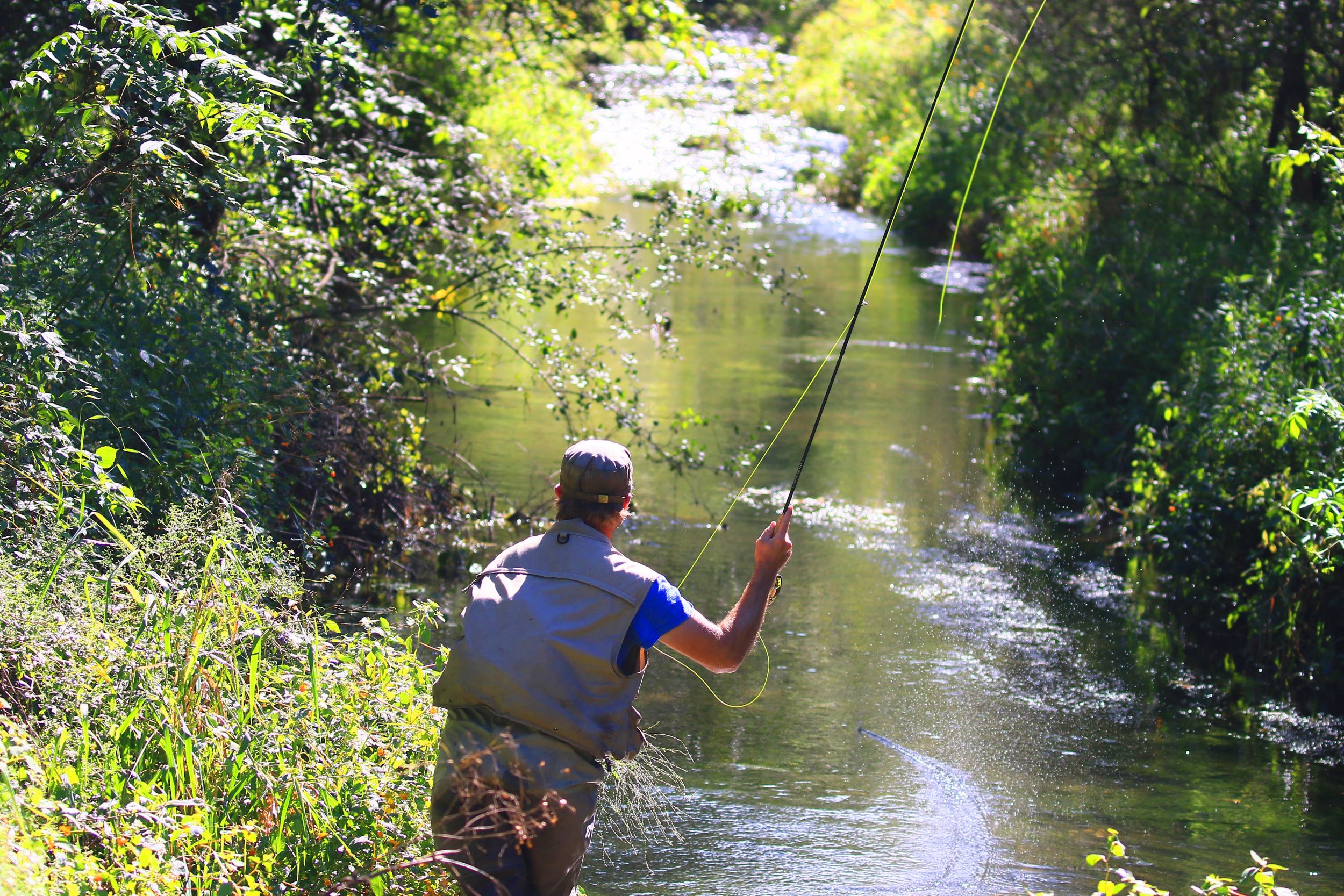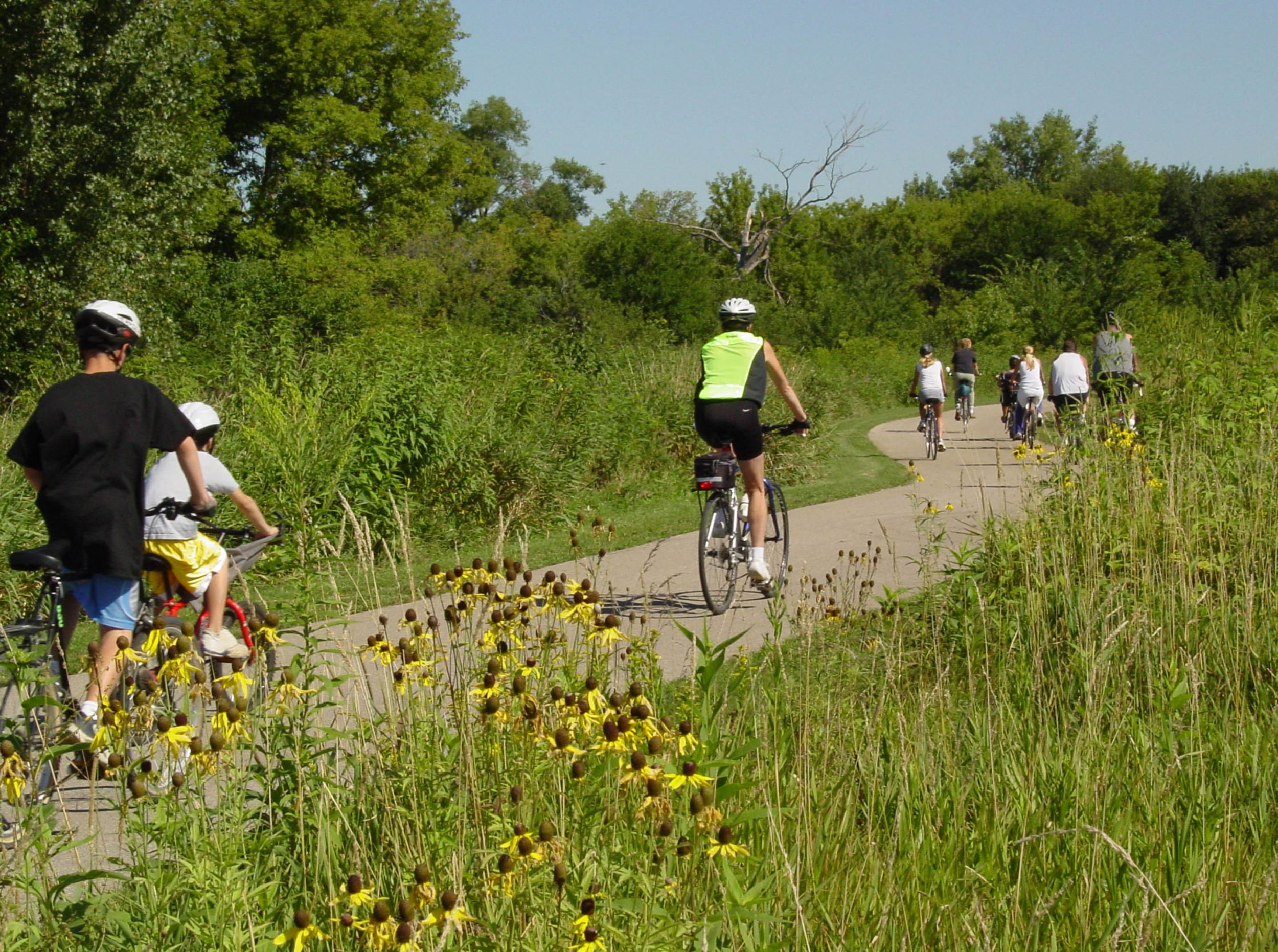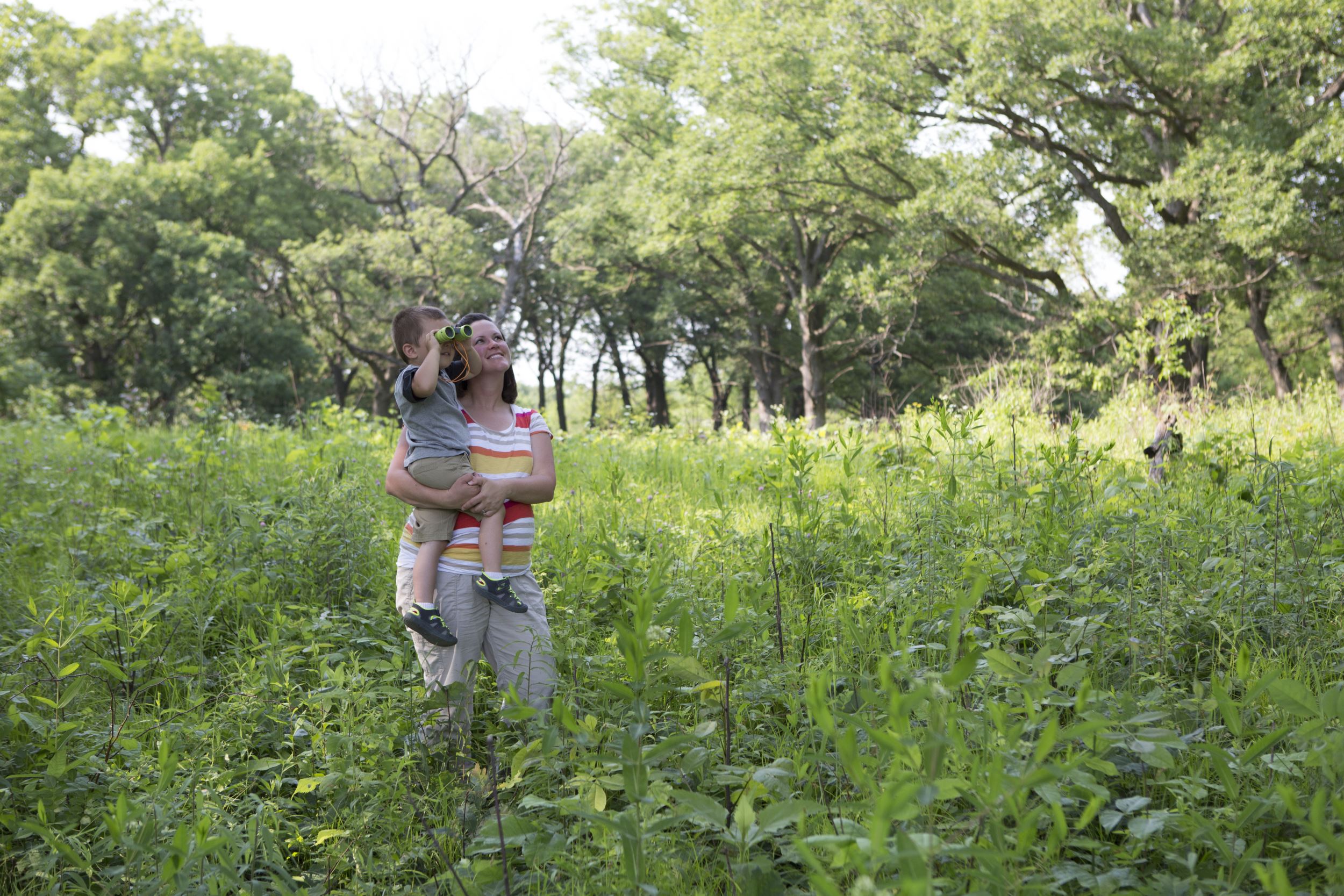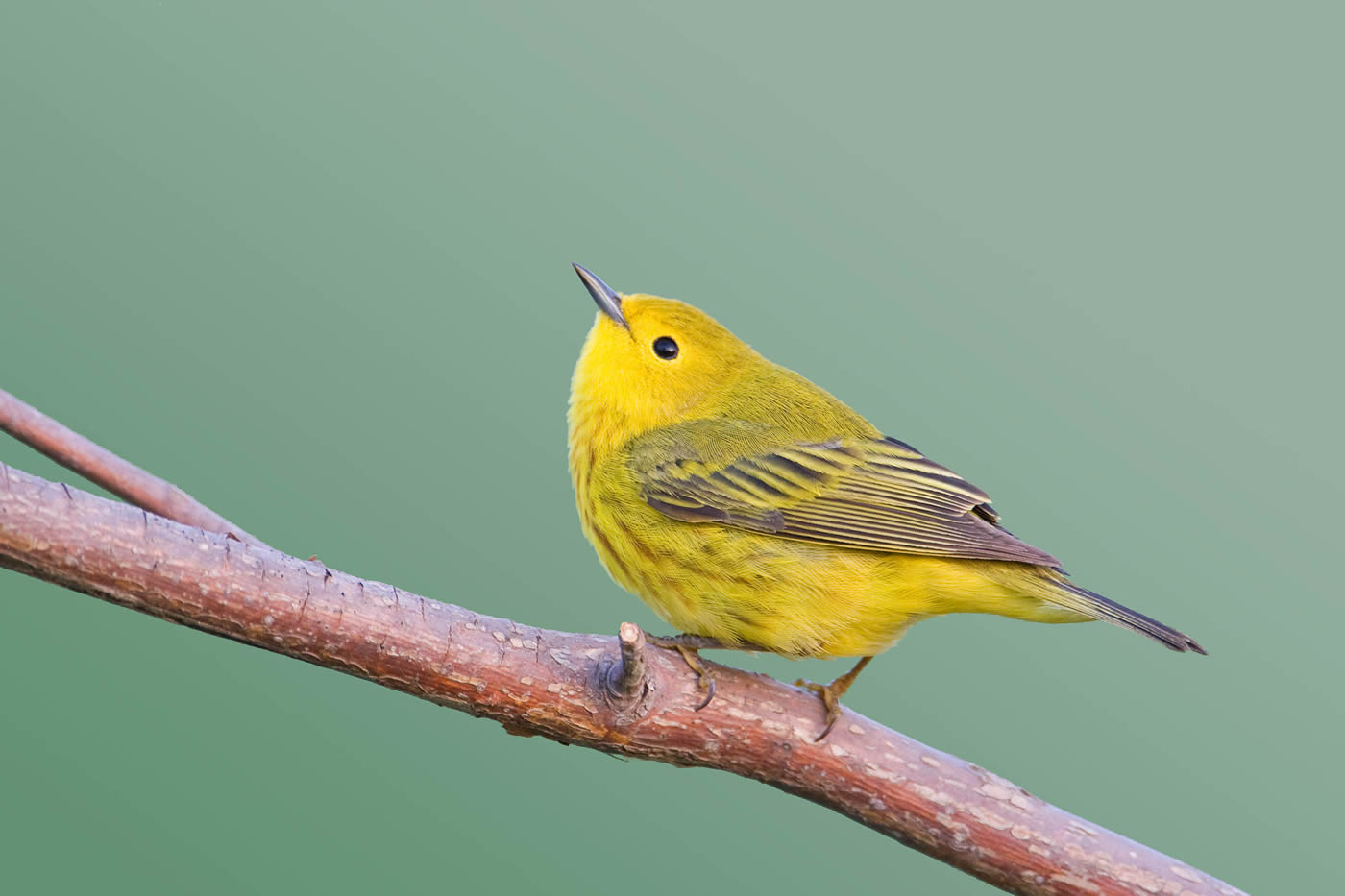Public Land: Does Iowa Have Enough?
By Erica Place on May 22, 2024 in Blog

What do you think of when you hear the words “public land?”
For nature lovers in Iowa, it means parks, trails and wildlife areas. Places people depend on for outdoor recreation; wildlife and plants depend on for their homes; and Iowa depends on for economic vitality. Places protected for future generations to enjoy.
Fruitful trout streams, scenic loess ridges, winding trails and serene state forests are found across Iowa. Well known and well-traveled places like Lake Rathbun, the Wabash Trace Nature Trail or Wikiup Hill. Hidden gems like White Pine Hollow State Preserve. Small-town community fixtures like the neighborhood trail.
The Iowa Economic Development Authority (IEDA), a state department charged with making Iowa the right choice for people and businesses, has published multiple studies that show natural landscapes and outdoor recreation are among the top five factors that influence a person’s decision where to live. Two-thirds of respondents in a 2018 IEDA study named Iowa’s state and county parks as a reason why Iowa is a desirable place to visit.
The Iowa Tourism Office, part of IEDA, recognized this as an opportunity for a marketing campaign to increase tourism. They began using images that focused on outdoor recreation in their outreach to potential visitors. People in beautiful Iowa places showed up on billboards and social media, in print and digital ads and more. The results speak for themselves.
The campaign made it 80% more likely that U.S. travelers would visit Iowa. It didn’t just have an impact on those who live across the country — sixty-four percent of people living in states that border Iowa said the campaign either gave them new information or changed their perception about Iowa.
Clearly, Iowa’s public natural areas are important for residents and visitors. And we should be proud that we have some great ones. The question is: Do we have enough?
“Where we rank in the country for amount of public land isn't the measurement I'm worried about,” says Joe McGovern, INHF President. “It's not a competition. What I do care about is, ‘Do we have enough parks, trails and wildlife areas to meet the needs of Iowans for outdoor recreation, soil health or water quality? Do we have enough to attract and retain workforce? Do we have enough to sustain our wildlife and plants? Is this a place people want to move to?’ I don’t believe we’re there yet.”
Iowa has tremendous opportunity to enhance conservation and outdoor recreation. Investing in natural resources and the need for more parks, trails and wildlife areas is key for helping our communities meet their full potential and enriching our quality of life.
"Do we have enough parks, trails and wildlife areas to meet the needs of Iowans for outdoor recreation, soil health or water quality? Do we have enough to attract and retain workforce? Do we have enough to sustain our wildlife and plants? Is this a place people want to move to?
I don’t believe we’re there yet.”
– Joe McGovern, INHF President
The stacked benefits of parks, trails and wildlife areas
Public lands support workforce development and economic vitality
Originally from Indiana, Mike Webb has called Iowa home for the last 16 years. While a job brought him to Iowa, it wasn’t his only consideration.
“Among the first thoughts I had when I moved to Iowa was ‘Where am I going to deer hunt this fall?’” Mike recalls.
Mike volunteers on the board of directors for the Iowa chapter of Backcountry Hunters and Anglers, and he has observed it’s getting harder for those new to the outdoors to find access of their own.
“We have more people vying for space in our parks and wildlife areas. The demand is going to keep going up,” he says.
 Iowa’s public hunting and fishing areas saw a massive influx of users during the height of the pandemic, and many of those Iowans have continued to buy licenses and make outdoor recreation a part of their regular activities. In addition to the license itself, hunters and anglers are spending money on gear, fuel, lodging and food.
Iowa’s public hunting and fishing areas saw a massive influx of users during the height of the pandemic, and many of those Iowans have continued to buy licenses and make outdoor recreation a part of their regular activities. In addition to the license itself, hunters and anglers are spending money on gear, fuel, lodging and food.
But as any hunter can attest, few things are as discouraging as pulling up to your desired location to find someone has beaten you there. While full parking lots at outdoor spaces are generally a good thing, it’s a clear sign we’re not yet meeting the need.
Guides and outfitters, liveries and concessionaires, owners of rental cabins or campgrounds, even photographers or artists rely on there being ample places to get outdoors.
In 2005, Darrin Siefken chose Waverly as the location for what would become a successful outfitting business, CrawDaddy Outdoors. Bremer County’s parks and water trails would provide a backdrop for gear rental, guide services or classes, and Darrin was determined to prove to himself that the small town of Waverly — just over 9,000 people at the time — could support his business idea.
“The business didn’t just attract locals — I estimate I had about a 3-hour reach,” Darrin says.
He says that reach is even farther now, magnified by increased park usage during and following the pandemic. But growth for these types of businesses relies on more places to get outdoors.
“CrawDaddy absolutely would not be viable without the parks, trails and wildlife areas we have locally,” Darrin says. “Even the few locations we have are clearly playing a role in economic development for this community.”
Darrin and his wife Janeen recently sold their business to fellow Waverly residents, who under Darrin’s continued guidance are excited to expand the community of nature lovers in northeast Iowa.
Public lands benefit our mental and physical health
Healthy environments make for healthy people. Dr. Matthew H. E. Mutel Browning, Associate Professor at Clemson University and a native Midwesterner, has made a career studying the mental and physical benefits of the outdoors.
Areas with access to nature see a multitude of benefits, including lower rates of cardiovascular disease, all-cause mortality, depressive and anxiety symptoms, and better birth outcomes for mom or baby.
 “Natural areas tend to have high levels of biodiversity, both in the plants and animals but also in the communities of micro-organisms,” Matt explains. “Some of the bacteria in the soil and air co-evolved with humans. Our gut, skin and other body parts benefit from these healthy communities that we breathe in and ingest tiny amounts of when we have a little dirt on our hands after being outside.”
“Natural areas tend to have high levels of biodiversity, both in the plants and animals but also in the communities of micro-organisms,” Matt explains. “Some of the bacteria in the soil and air co-evolved with humans. Our gut, skin and other body parts benefit from these healthy communities that we breathe in and ingest tiny amounts of when we have a little dirt on our hands after being outside.”
Matt shared that experimental research shows that even a short time in nature can help curb cravings and boost self-discipline, helping people make healthier food choices. And natural environments have a way of allowing areas of the brain associated with concentration and decision-making to recover from fatigue.
“We are predisposed to have an emotional and even chemical bond to be in these places and around plants, animals and other living things,” Matt says.
Iowa’s latest Statewide Comprehensive Outdoor Recreation Plan (SCORP), a five-year framework for outdoor recreation priorities in Iowa, asked respondents what personal benefits they receive from recreating outdoors:
- A sense of peace, relaxation or stress relief (95%)
- Positive family activities (92%)
- Mental or emotional health (92%)
- Health and fitness (93%)
- Healthy childhood development (86%)
- The healing power of the outdoors (85%)
- Adventure or challenging activities (75%)
According to the 2023 Cancer in Iowa report produced by the Iowa Cancer Registry and State Health Registry of Iowa, we are the only state in the nation with a significantly rising cancer rate, with the second highest rate overall. The cause of the rising rates aren’t clear, but we do know that high levels of nitrate in drinking water increases risk for cancer and birth defects. So, it’s important to be proactive in protecting our environment and water.
More Iowans need access to public lands
We’re living in an unprecedented time where your employment doesn’t necessarily determine where you live.
 “More and more people have jobs that allow them to work from anywhere, so we need to give them a reason to choose Iowa,” explains Dennis Goemaat, Linn County Conservation’s Executive Director. “People are deciding where they want to go based on what they can do when they get there. We have to think about what people want to do after work. Are we providing enough opportunity?”
“More and more people have jobs that allow them to work from anywhere, so we need to give them a reason to choose Iowa,” explains Dennis Goemaat, Linn County Conservation’s Executive Director. “People are deciding where they want to go based on what they can do when they get there. We have to think about what people want to do after work. Are we providing enough opportunity?”
Iowans can’t reap all the mental and physical health benefits if the parks, trails and wildlife areas are out of reach.
“I live on a quarter-acre lot in town, and when I want to recreate, I have to go somewhere to do that — I don’t have a choice,” Dennis Goemaat continues. “There are far more people in that situation than we talk about. How do we meet their needs so they do have places to go?”
Iowa’s latest SCORP reports that people prefer to travel 10 miles or less to participate in outdoor recreation. It also showed that lack of access or opportunity and not knowing where to go were in the top five reasons someone did not participate in outdoor recreation in the last two years.
The farther Iowans have to travel for access to nature, the fewer personal benefits of parks, trails and wildlife areas they’ll see.
Public lands can impact environmental health
Among the stacked benefits of our remaining prairies, woodlands, wetlands and other open spaces are the important ecosystem services they provide, like removing and preventing air and water pollution. Thoughtful placement or restoration of natural ecosystems paired with other mitigation can have a tangible impact on environmental health.
In addition to improving water quality by filtering contaminants, protected land in strategic places can also combat water quantity issues by holding water in times of drought and holding water back during flooding. The frequency and magnitude of flooding are projected to increase in Iowa in the 21st century. Iowa’s resiliency to these floods will depend on the combination of protected land and the adaptability of our policies and practices.
A recent study from IIHR–Hydroscience and Engineering at the University of Iowa found 450,000 acres of row crop located within our state’s 2-year floodplain. This means in any given year there’s a 50:50 chance of that land being flooded. Not only does that increase soil loss and contaminants in our water, but on average, $230 million dollars in crops are lost to floods each year. The effects of heavy rain events can be mitigated with the right land-based solutions, including putting habitat on vulnerable ground.
Plants and wildlife also need public lands
Parks, trails and wildlife areas safeguard habitat for our wildlife and plants, an alarming number of which are in trouble.
 The Iowa Wildlife Action Plan, a long-range plan for conserving Iowa’s wildlife, found that of the 999 animal species considered (including birds, mammals, amphibians, reptiles, land snails, mussels, fish, butterflies, dragonflies and damselflies), nearly a third of them met the criteria to be listed as a Species of Greatest Conservation Need. That means that without help, their populations are at risk of declining enough to be considered threatened or endangered.
The Iowa Wildlife Action Plan, a long-range plan for conserving Iowa’s wildlife, found that of the 999 animal species considered (including birds, mammals, amphibians, reptiles, land snails, mussels, fish, butterflies, dragonflies and damselflies), nearly a third of them met the criteria to be listed as a Species of Greatest Conservation Need. That means that without help, their populations are at risk of declining enough to be considered threatened or endangered.
The full plan is available on the Iowa Department of Natural Resources website, but of particular note is that 100% of our freshwater mussel species meet those criteria. They need protected outdoor spaces just as much as we do, along with the nearly 400 plant species found in Iowa that are now classified as endangered, threatened or of special concern.
We are rapidly losing the diverse wild lives that call Iowa home, but it is not too late to do something about it. The power to protect them lies in our decisions about how we treat the land and water.